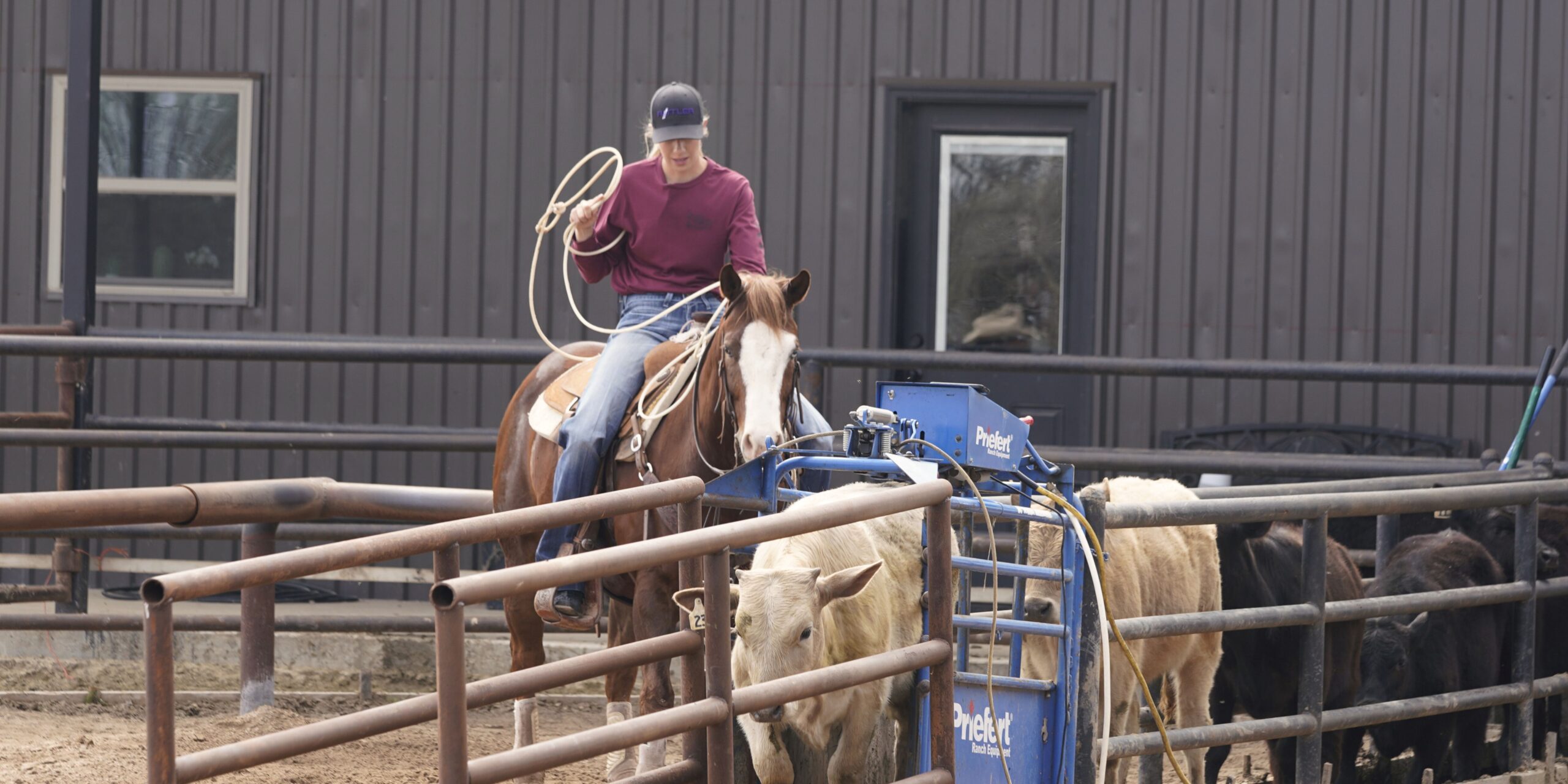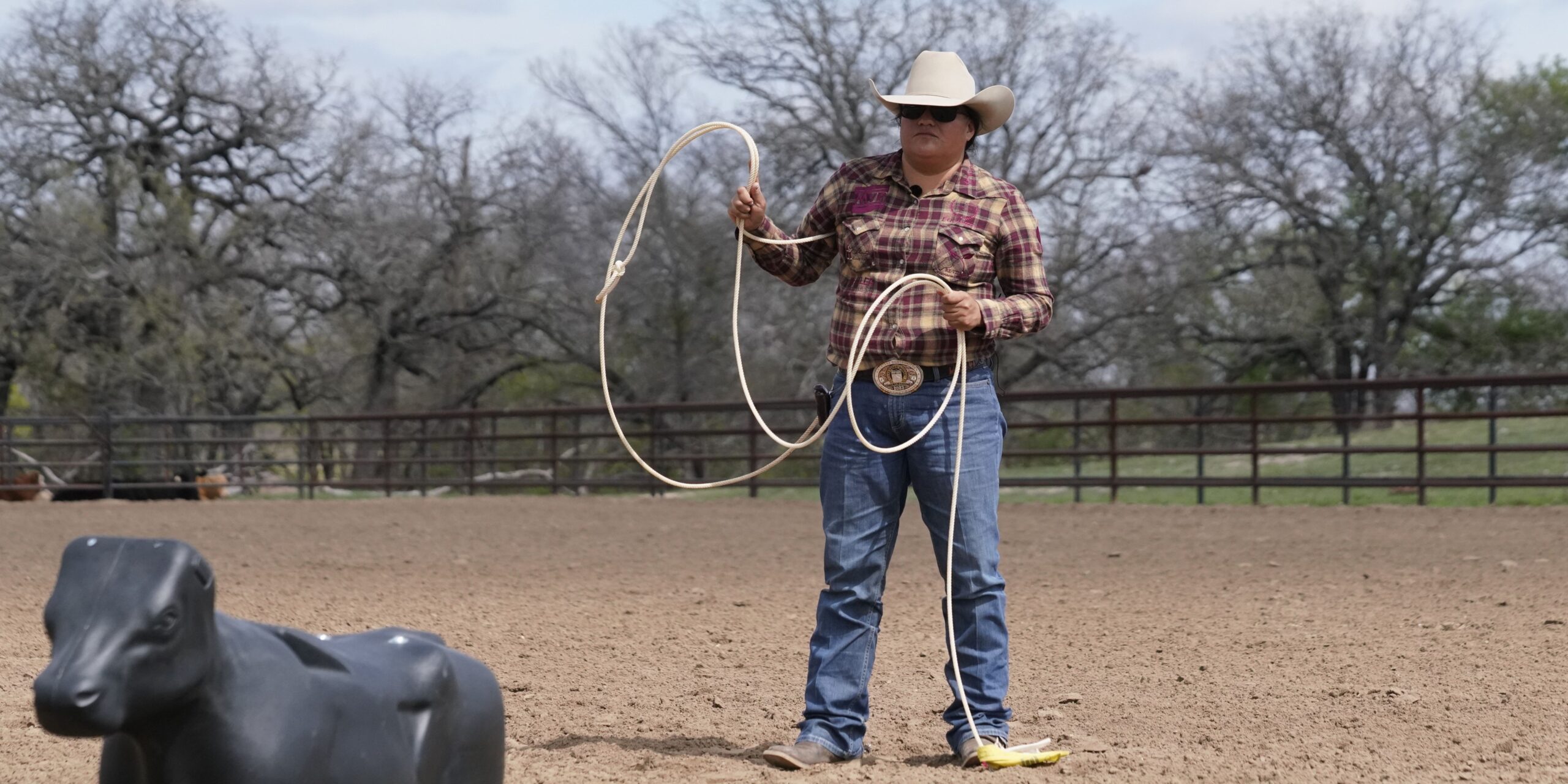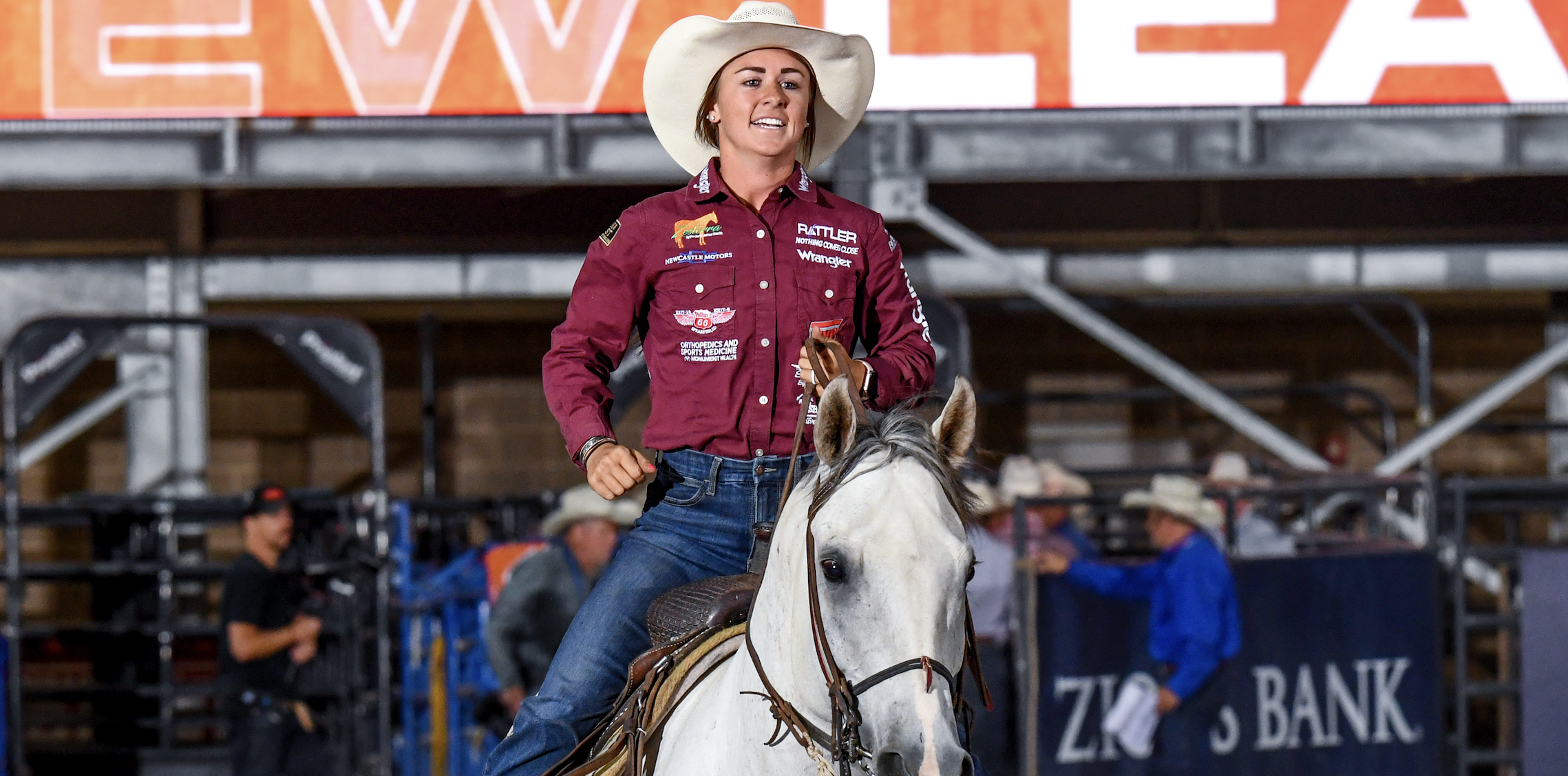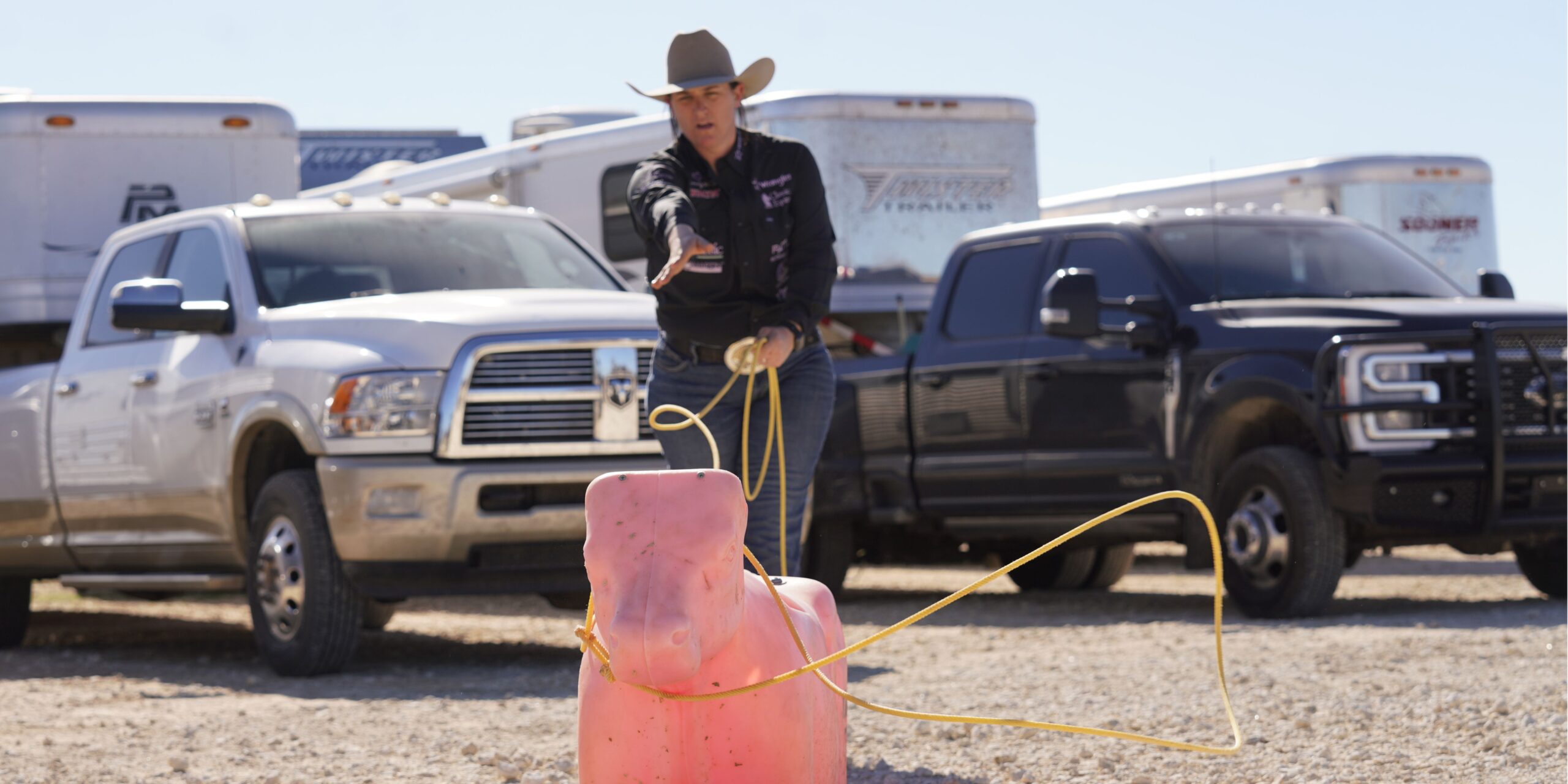If you’re new to roping or rodeo, one of the first things you’ll notice is the creative word choice that goes along with each sport.
Read on for an introductory breakdown to some of the commonly used terms of breakaway roping.
11s: These are the evidence a good-stopping horse that gets his butt down. As his hindquarters drop and he digs into the dirt, he leaves two parallel skid marks, so to speak, in the shape of an “11.”
Backing into the Box: This is what the rider does before her run can begin. She enters the roping box on the right side of the calf, and positions her horse with its butt backed up to the rear corner of the box and its front end facing the barrier.
Bell Collar Catch: For a breakaway catch to be legal, the rope must go around the head of the calf and come tight around the calf’s neck. It cannot catch legs or feet.Bridle Catch: This happens when, instead of the rope going over the calf’s head and settling around its neck, the rope is instead caught in the calf’s mouth. This is not a legal catch.
Catch: The act of successfully throwing the loop of your rope around the head and neck of the calf.
Catching a leg: This happens when a calf steps through the thrown loop. If this happens, the catch is not legal and no time is given.
Coils: Ropes are generally around 30-feet long and, practically, it makes sense to wind them up for storage and carrying purposes, just like with a garden hose. When a breakaway roper prepares for a run, s/he will hold the excess part of the rope—the coils—in her reining hand.
Delivery: How the loop is thrown. In breakaway roping, the delivery can be the determining factor between taking home a check or not.
Drop: When the roper delivers his/her throw, the targeted calf may lower its head, thereby avoiding a catch.
Ducking off: Ideally, a calf will run straight for the opposite end of the arena. If instead a calf quickly maneuvers right or left, this is called “ducking off.”
Fair/Legal Catch: A loop that is thrown over the calf’s head in accordance with the rules, ensuring a time is earned.
Figure eight: Once your loop comes around the calf’s neck, the bottom strand of your loop will come up behind the top strand making a figure eight in your loop. OR when your ‘figure eight’ comes around the top of a calf and catches the calf’s tail (which would be considered a no time.)
Free: A horse that is working according to the rider’s cues, as opposed to locking onto his own ideas about the job.
Got out: When you hit the barrier as close as you can to breaking it, but don’t. People behind the box might yell, “You’re out!” to let you know you didn’t break the barrier.
Late: In the fastest sport in rodeo, a good time depends on a horse and rider’s ability to leave the box at the perfect time. If the pair leaves “late,” they are forfeiting time and ground covered by the calf.
Loop: Outside the rodeo world, this is sometimes referred to as a lariat or lasso. In rodeo, ropers throw loops to catch cows.
Miss: When the loop of the rope fails to go around the head and/or neck of the calf. This results in no time given.
Nod: To indicate that the roper is ready for the calf to be released from the chute, s/he will nod her head to begin the run.
Pitch: When you throw the slack of your rope and “pitch your slack.” In the breakaway, you rope your calf and, once you release your loop, you grab your slack with your right hand and pull it back and “pitch” it back to the calf. This helps so 1. your loop can come tight around the calf’s head and keep the calf from running through your loop or catching a leg, and 2. you release your slack so your horse can stop faster and the rope will break quicker from the saddle horn.
Push: To set up for a run, a calf is moved into a chute next to the roper’s box. To ensure the calf moves out of the chute when the gates of the chute open into the arena, a person will position themselves behind the calf in the chute and push it into the arena.
Short: When a horse cheats you in your delivery because he’s anticipated the end of a run. The horse stops sooner than you need it to or quits the run.
Slide: Your horse will make 11’s as it slides on his hind end to stop.
Start: The beginning of a run is marked by the calf leaving the chute. When it does, it breaks a barrier, starting the clock and indicating to the roper that s/he can leave the box in pursuit of the calf. That is the “start” of the run.
Swing: In order to throw a loop big enough and fast enough to catch a calf, the roper must generate enough speed and power to make the rope travel. S/he does this by bringing the loop up over her head in one hand (the other is steering the horse) and windmilling the loop. This is the roper’s swing.
Top knot: When, instead of the loop going completely over the calf’s head and around its neck, it only catches around the top of the calf’s head and doesn’t go over the nose.
*Re: the use of “s/he” — Boys, girls, men and women all compete in breakaway roping, though the vast majority of its ropers are female. Nonetheless, we recognize everyone contributing to the sport.
READ MORE: Breakaway Roping 101











